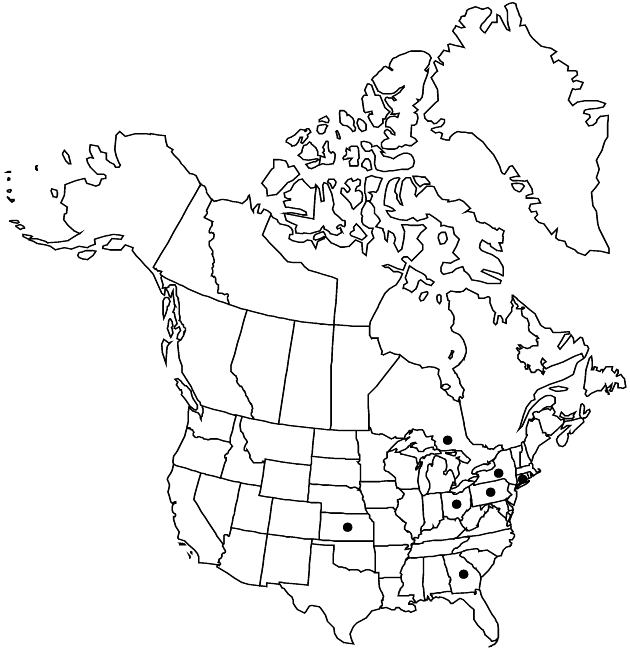Difference between revisions of "Leontodon hispidus"
Sp. Pl. 2: 798. 1753.
FNA>Volume Importer |
imported>Volume Importer |
||
| (6 intermediate revisions by 2 users not shown) | |||
| Line 8: | Line 8: | ||
}} | }} | ||
|common_names=Bristly hawkbit | |common_names=Bristly hawkbit | ||
| + | |special_status={{Treatment/ID/Special_status | ||
| + | |code=I | ||
| + | |label=Introduced | ||
| + | }} | ||
|basionyms= | |basionyms= | ||
|synonyms={{Treatment/ID/Synonym | |synonyms={{Treatment/ID/Synonym | ||
|name=Leontodon hastilis | |name=Leontodon hastilis | ||
|authority=Linnaeus | |authority=Linnaeus | ||
| + | |rank=species | ||
}} | }} | ||
|hierarchy=Asteraceae;Asteraceae tribe Cichorieae;Leontodon;Leontodon hispidus | |hierarchy=Asteraceae;Asteraceae tribe Cichorieae;Leontodon;Leontodon hispidus | ||
| Line 27: | Line 32: | ||
|elevation=100–1800 m | |elevation=100–1800 m | ||
|distribution=Ont.;Conn.;Ga.;Kans.;N.Y.;Ohio;Pa.;Europe. | |distribution=Ont.;Conn.;Ga.;Kans.;N.Y.;Ohio;Pa.;Europe. | ||
| − | |discussion=<p>Leontodon hispidus has been reported in eastern North America. It is recognized by the solitary heads, coarsely hispid leaves and peduncles, and pappi with long plumose and short non-plumose bristles. It is often confused with L. saxatilis, in which the pappi of the outermost cypselae are reduced to crowns. Leontodon hirtus Linnaeus has been reported from various locations in North America; the specimens appear to be assignable to L. hispidus Linnaeus.</p> | + | |introduced=true |
| + | |discussion=<p><i>Leontodon hispidus</i> has been reported in eastern North America. It is recognized by the solitary heads, coarsely hispid leaves and peduncles, and pappi with long plumose and short non-plumose bristles. It is often confused with <i>L. saxatilis</i>, in which the pappi of the outermost cypselae are reduced to crowns. <i>Leontodon</i> hirtus Linnaeus has been reported from various locations in North America; the specimens appear to be assignable to <i>L. hispidus</i> Linnaeus.</p> | ||
|tables= | |tables= | ||
|references= | |references= | ||
| Line 36: | Line 42: | ||
-->{{#Taxon: | -->{{#Taxon: | ||
name=Leontodon hispidus | name=Leontodon hispidus | ||
| − | |||
|authority=Linnaeus | |authority=Linnaeus | ||
|rank=species | |rank=species | ||
| Line 51: | Line 56: | ||
|publication title=Sp. Pl. | |publication title=Sp. Pl. | ||
|publication year=1753 | |publication year=1753 | ||
| − | |special status= | + | |special status=Introduced |
| − | |source xml=https:// | + | |source xml=https://bitbucket.org/aafc-mbb/fna-data-curation/src/2e0870ddd59836b60bcf96646a41e87ea5a5943a/coarse_grained_fna_xml/V19-20-21/V19_426.xml |
|tribe=Asteraceae tribe Cichorieae | |tribe=Asteraceae tribe Cichorieae | ||
|genus=Leontodon | |genus=Leontodon | ||
Latest revision as of 20:51, 5 November 2020
Perennials, 10–60 cm. Stems 1–6, usually simple, scapiform, sometimes branched, glabrous or bristly hispid. Leaves: blades oblanceolate, 6–30 × 0.5–4 cm, margins coarsely dentate to deeply lobed (lobes straight, often narrowly triangular, terminal lobes usually large), faces usually coarsely hispid or hirsute, hairs often 2–3-fid. Heads usually borne singly. Peduncles ebracteate. Calyculi of 10–12, subulate bractlets 1–3 mm, glabrous or densely hirsute. Involucres campanulate, 7–13 × 10–15 mm. Phyllaries 12–16, linear-lanceolate, 6–10 mm, subequal, glabrate to coarsely hispid or hirsute. Florets 30–50+; corollas bright yellow or outermost orange or reddish, 12–15 mm. Cypselae fusiform, 6–12 mm (sometimes narrowed distally and weakly beaked); pappi pale brown, mixed: outer series of bristlelike scales, inner of plumose bristles. 2n = 14.
Phenology: Flowering Mar–Sep.
Habitat: Fields, lawns, gardens, roadsides
Elevation: 100–1800 m
Distribution

Introduced; Ont., Conn., Ga., Kans., N.Y., Ohio, Pa., Europe.
Discussion
Leontodon hispidus has been reported in eastern North America. It is recognized by the solitary heads, coarsely hispid leaves and peduncles, and pappi with long plumose and short non-plumose bristles. It is often confused with L. saxatilis, in which the pappi of the outermost cypselae are reduced to crowns. Leontodon hirtus Linnaeus has been reported from various locations in North America; the specimens appear to be assignable to L. hispidus Linnaeus.
Selected References
None.